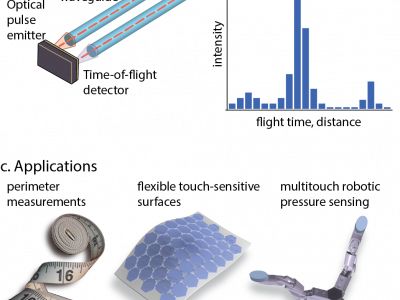Image Processing

Retinal Fundus Multi-disease Image Dataset (RFMiD 2.0) is an auxiliary dataset to our previously published dataset. RFMiD 2.0 is a more challenging dataset to research society to develop the computer-based disease diagnosis system. Diabetic Retinopathy, cataracts, and refractive error in the eye are leading disease which causes permanent vision loss more frequently. Therefore, developing an AI-based model to classify these diseases is useful for ophthalmologists. This dataset consists of 860 images of frequently and rarely observed 51 diseases.
- Categories:
 3831 Views
3831 Views
This dataset, collected from a group of students, contains 505 pages of 10 specific words: a, b, c, d, true, false, correct, incorrect, yes and no; each page in the dataset has 10 rows; each row contains 5 words written by the students. The dataset could help analyze the accuracy and consistency of handwriting for these specific words and in developing and test handwriting recognition systems for these fixed labels. The dataset could be a valuable resource for researchers in the field of education.
- Categories:
 86 Views
86 ViewsThis dataset containg 1900+ images divided into fresh oranges and rotten oranges. In an orange packing factory, a video was recorded, by placing the camera parallel and above the oranges conveyor. The video was captured for 10 minutes with a quality of Ultra High Definition (4K) with 60 frames per second and a High Dynamic Range feature. The video was changed from High Dynamic Range to Standard Dynamic Range by the use of Splice - Video Editor & Maker software. The video is inserted to developed algorithm operating video processing on it and creating the frames.
- Categories:
 84 Views
84 ViewsIn practical media distribution systems, visual content usually undergoes multiple stages of quality degradation along the delivery chain, but the pristine source content is rarely available at most quality monitoring points along the chain to serve as a reference for quality assessment. As a result, full-reference (FR) and reduced-reference (RR) image quality assessment (IQA) methods are generally infeasible. Although no-reference (NR) methods are readily applicable, their performance is often not reliable.
- Categories:
 308 Views
308 ViewsIn practical media distribution systems, visual content usually undergoes multiple stages of quality degradation along the delivery chain, but the pristine source content is rarely available at most quality monitoring points along the chain to serve as a reference for quality assessment. As a result, full-reference (FR) and reduced-reference (RR) image quality assessment (IQA) methods are generally infeasible. Although no-reference (NR) methods are readily applicable, their performance is often not reliable.
- Categories:
 270 Views
270 Views
Tea chrysanthemums can provide many components that are beneficial to human health. However, the harvesting process is time-consuming and labor-intensive. In the future, tea chrysanthemums harvesting can be done by machines. The first step towards automated harvesting is the detection of tea chrysanthemums, which are highly dependent on the quantity and quality of datasets. In a natural environment, a strain of chrysanthemum can present multiple flower heads in different stages and sizes.
- Categories:
 19 Views
19 Views
- Categories:
 556 Views
556 Views



